Trash or treasure? Your old belongings lying around could be worth some money

Some of the items found in a vintage shop in Chinatown. (Photo: Aqil Haziq Mahmud)
SINGAPORE: For more than three decades, Mr Jamshed Fozdar kept a pair of small, gold boxes in a vault in Singapore without ever taking them out.
The 93-year-old bought the boxes from a Vietnamese empress back in 1956, while visiting her at her palace in the city of Hue. “At that time, we knew that they needed money and we wanted their friendship,” Mr Fozdar told CNA at his apartment in Selegie.
But like many old knick-knacks kept primarily because of sentimental value – or because people just don’t have the heart to put them in the bin – Mr Fozdar’s boxes have not really seen the light of day since he moved to Singapore in 1987. He’s not aware of how much they’re worth either.
“We never thought about it because we never needed money,” said Mr Fozdar, who worked as an engineer, wrote several books and lived in different parts of the world. “It’s just something that we had when we were interested in these kinds of things.”
The charming boxes are engraved with the Chinese zodiac signs – one bearing dragons chasing a pearl and the other depicting rabbits chewing lettuce.
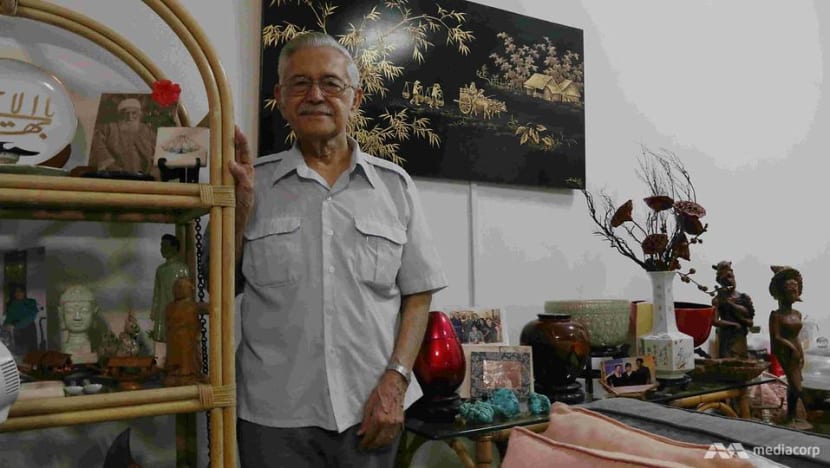
Now, Mr Fozdar wants to sell them because “at 93, only a damn fool would keep them”.
“Money can be used better than kept in vaults; it won’t help anybody,” he said. “You could donate it to children’s charities in different parts of the world.”
Mr Fozdar has sent the boxes to HotLotz auction house for valuation, where a team of experts will determine what they’re made of, which part of history they’re from and how much they’re worth.
This process of getting family heirlooms valued in the hope of selling them for some cash is not uncommon in Singapore, observers said.

In June, the BBC reported that a family in Scotland had kept a medieval chess piece in a drawer for more than 55 years not knowing what it was. The family’s grandfather had bought the piece for £5 (S$9) in 1964.
When the family took the piece to Sotheby’s auction house in London, experts found that it was one of the long-lost Lewis Chessmen dating back nearly a thousand years. The piece was sold at a Sotheby's auction for £735,000.
ANTIQUES IN SINGAPORE?
In Singapore, HotLotz puts up about 10,000 items for auction in a year, ranging from porcelain pieces and designer fashion, to expensive jewellery and works of art. The auction house conducts 60 auction sales a year, with items being sold for anything from S$20 to S$20,000.
READ: Missing a piece of old Singapore? This 'heritage keeper' has it in his home
HotLotz managing director Matthew Elton told CNA that Singapore has its fair share of valuable antiques, given its history as a trading centre.
“You've had sort of wealthy local families growing through those times,” he said at his saleroom in Bukit Merah. “You've had a large international community in Singapore; people have come here to help build the country.”
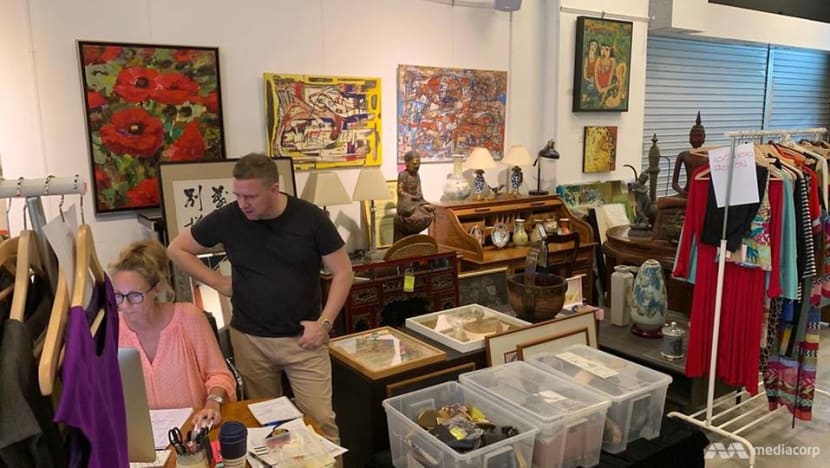
But Mr Elton said valuable items aren’t limited to wealthy families, especially as he’s seen articles that were cheaper to maintain because they withstand weather better – like wooden furniture and silver pieces – being auctioned off for a decent sum of money.
“You can have great taste and be poor, and just buy something nice. Or you might have won something in a bet, or sometimes people got paid in things,” he added. “I think most families have got something in the cupboard somewhere, but they’re just not sure if it’s worth any money.”
AN EYE FOR ANTIQUES
If you’re thinking of striking it lucky with a dusty trinket you’ve kept for years, but don’t know the value of, Mr Elton said the first point to note is the item’s condition.
Is it broken? Does it have missing bits? Has it been glued back together? These might all make it less valuable. “The quality of the workmanship and the materials is often the big sign,” he said.
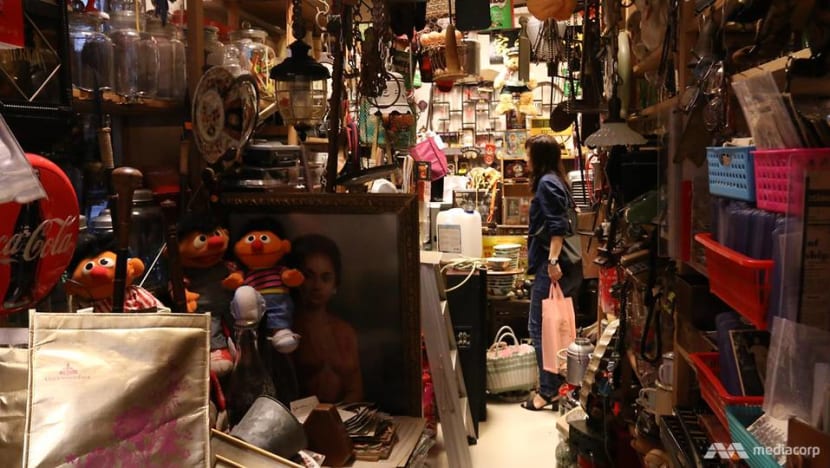
The Internet is another place to get more information on the item, with “all sorts of chat groups and forums around on people who've got passion in certain areas”. “They love people asking them questions,” Mr Elton said.
This can help establish the item’s provenance: What is its history? Where did it come from? How long has it been kept for?
“If it’s been cared for for years; if it's got a bit of mythology in the family – it was grandma's favourite vase – then that's always a good sign that it's got some age,” Mr Elton said.
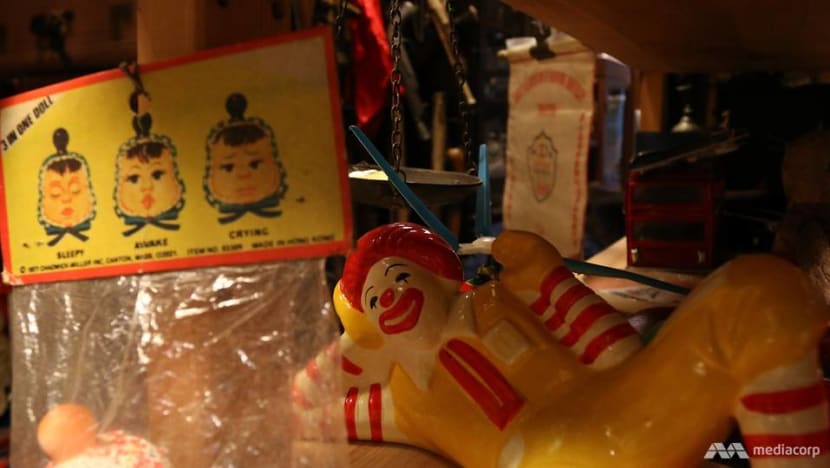
While Mr Elton described valuable “antiques” as items more than 100 years old, he noted that those in Singapore were often from more recent years. But these “vintage” items might still have some value, he added.
US$10 MILLION SALE
If you’re still feeling confident at this point, it’s time bring it in for valuation at an auction house.

At most major auction houses like Christie’s, valuations are free. This often involves sending high-resolution images of the item first, and if there’s interest, bringing it in for a proper appraisal.
While auction houses would have a team of in-house experts and external specialists for valuations, sellers should also provide as complete a provenance as possible. The auction house will then piece everything together.
High-end auction houses usually deal in watches, jewellery as well as Asian and Western art, and conduct auctions both live and online. Prices can go anywhere from US$3,000 to US$10 million.

At HotLotz, the figures are not as eye-watering, but the valuation and auctioning procedures are largely the same.
Like most auction houses, HotLotz will charge both the buyer and seller 19.5 per cent of the final sale price as premium and commission fees. This only happens when items are successfully sold.
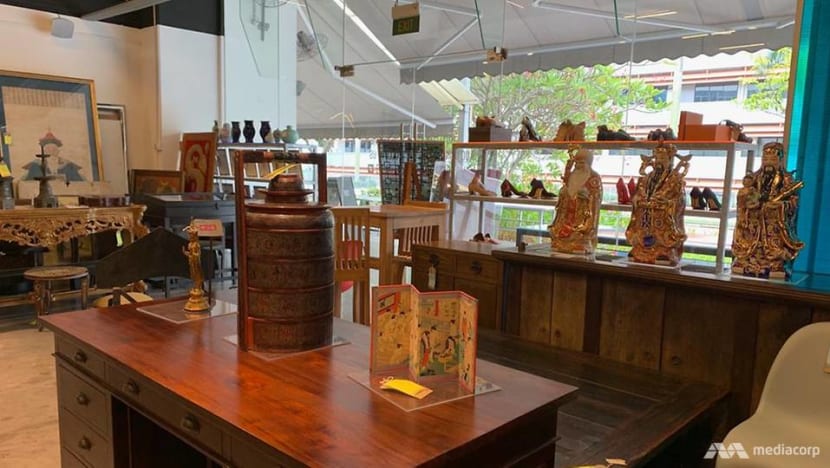
The difference is that HotLotz has two types of auctions: One targeted at the Singapore market, and another for the global audience – usually for more valuable items. This system raises the possibility of higher prices, Mr Elton said.
“I’d say we’re everything between Carousell and Christie’s,” he added, noting that HotLotz will still turn away items “not worth anything”, including mainstream brands, counterfeit products and electrical appliances.

Still, Mr Elton acknowledged the sentiment that auction houses were too posh for the average person. “We try really hard to be really nice and friendly, and honest and pragmatic with our advice,” he stated. “We don’t want anyone to be like, it’s too good for me.”
BARGAIN HUNTING
Even then, there are other places that vintage items of minimal value can be sold.
WATCH: Bronze: A Forgotten Treasure
Online marketplaces like Carousell and eBay are one example, although Mr Elton said potential buyers would always seek discounts on the asking price.
It would also be worthwhile to check out the handful of antique shops around Singapore, he said, but again warned that some might only be interested in buying cheap.
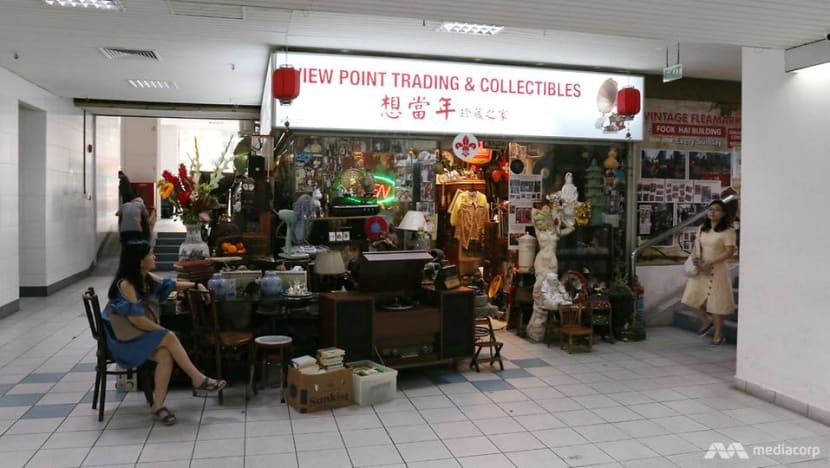
Some dealers might try questioning an item’s authenticity to get the lowest price, said Michael Poh, owner of Viewpoint Trading and Collectibles, a vintage shop in Chinatown.
“Even if it’s genuine, they’ll say this is not worth much,” he told CNA at his musky shop haphazardly stocked with old Coke bottles, wall clocks and decorative plates.
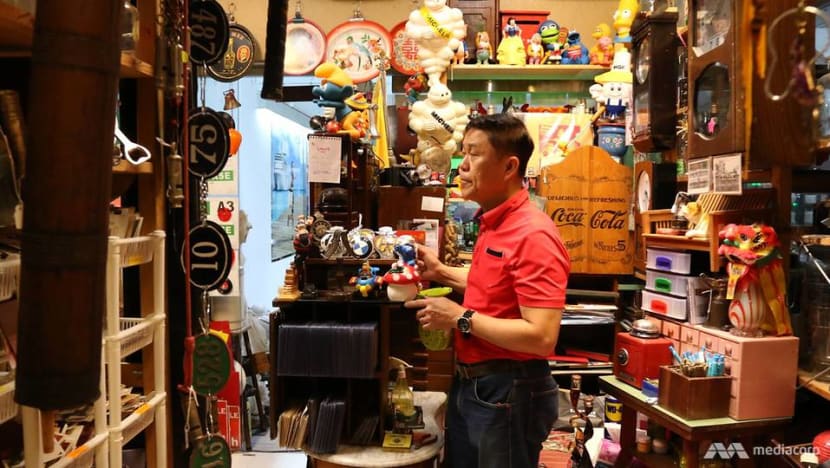
Mr Poh, on the other hand, tries to run an earnest business. He helps students with their school projects, builds relationships with customers, and lets them know which items are counterfeit.
He also gets about 10 visits a week from people trying to sell him vintage ware like old biscuit packaging and branded bottle openers. Items brought in are never really valuable, so he doesn’t buy them for more than S$100, especially as he needs to sustain the business.
“It’s very easy to buy, but very difficult to sell,” he said.
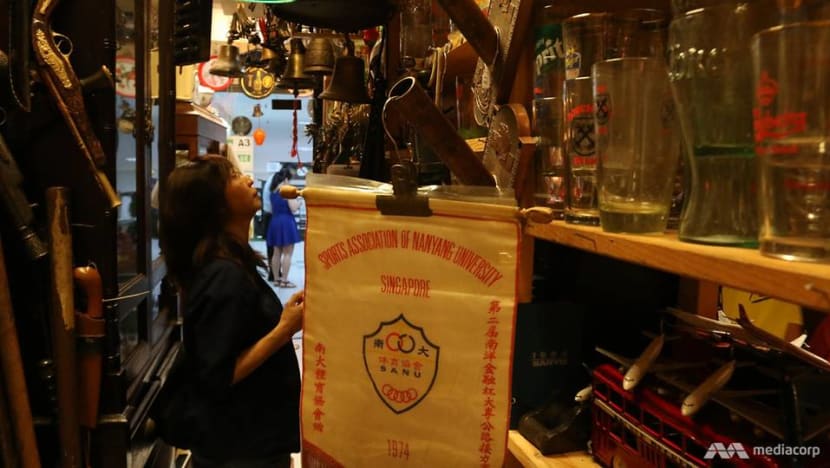
Mr Poh has been in the business for more than two decades, so he would judge these items’ value solely based on their physical attributes: Does it feel heavy? Is the artwork intact? Are there official logos from that period in time?
He does not ask the seller questions about the item either, preferring to keep his strategy to himself before coming up with a price in a matter of minutes.
“It’s very difficult to say if there’s any value in these things,” he added, noting that it’s usually a case of “willing seller, willing buyer”.
RUNNERS AND WAREHOUSES
Back at the shop, a rag and bone man in tattered clothes turned up to sell Mr Poh a first-aid kit from one of the early Army vehicles in Singapore. The metal case was rusty, and the inventory list on the inside of the lid had peeled off terribly.
Mr Poh still studied the item for about a minute, and when the man suggested a price of S$50, he pulled out his wallet and simply handed over the cash.
“S$50 is too high, but I buy because I want him to come back to me,” he said, noting that this “runner” had been selling to him for a long time.

But the bulk of Mr Poh’s items come from forfeited warehouses and recently sold private homes. These homes usually belonged to older folks who have died, and the children would invite Mr Poh to take whatever he wanted for a bit of cash.
Last year, Mr Poh combed through a semi-detached house in Aljunied and bought S$3,000 worth of vintage items, including an old turntable in poor condition.
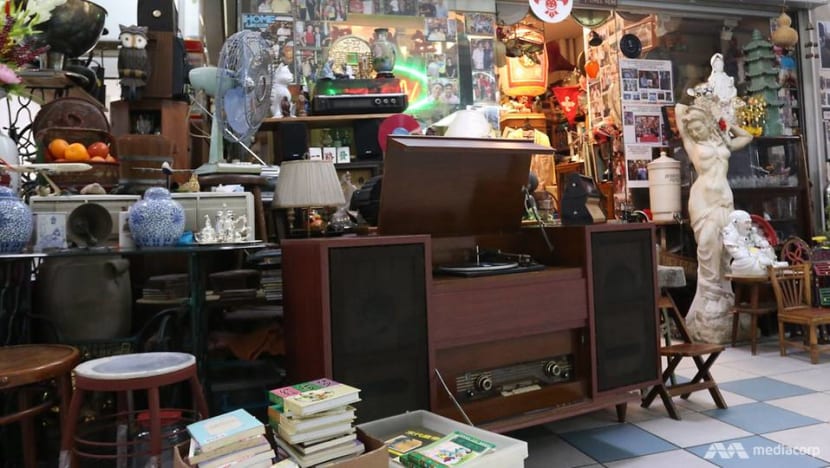
He paid about S$1,000 to refurbish the turntable and make it work again, and now it sits proudly outside his shop playing nostalgic tunes from old vinyl records. For interested buyers, the starting price is S$2,500.
It is clear that some vintage items, while not rare, still have some value. In the case of Mr Fozdar’s gold boxes, determined to be from the Qing dynasty in late 19th-century China, they have more than just some value.

The boxes, made of 20-carat gold and probably used to hold jewellery, were likely offered to a couple during their wedding. Their designs celebrated the year of the dragon and rabbit.
These boxes are currently listed on HotLotz’s international auction, and bidding will end on Jul 28. Estimated price? Anywhere between S$18,000 and S$22,000.














